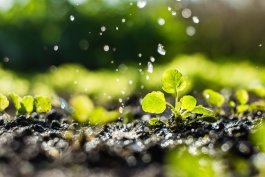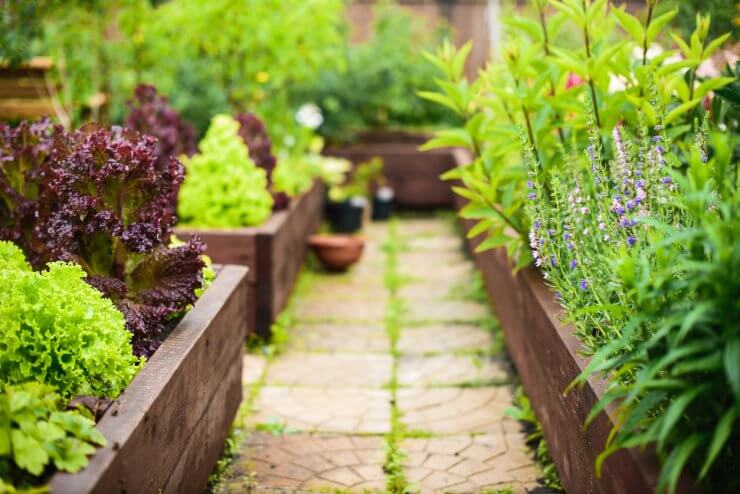
When we moved to my new town, I was absolutely astonished by my first water bill. Our town not only has a brown water issue on rainy days, but they also bill at rates that are unheard of to “fix” the water (jury’s still out on that one). Getting these new outrageous bills has made me seriously consider my water usage, and when we built our raised beds I knew I’d need to figure out a more efficient watering method.
Also on my mind, is how my garden feels when we go on vacation in the summer. I’ve always had something rigged up like a sprinkling timer, but I hate how sprinklers water from the top and I particularly hate the powdery mildew that comes with using sprinklers.
So if you’re like me, you’re probably wondering how you can fix both dilemmas: water conservation and automation. And I’m happy to say there are plenty of great ways to do it, and I’ll tell you how I did it.

What is a self-watering garden bed?
Technically speaking, a self-watering raised bed or planter is one in which the plants are watered from underneath. You have a reservoir of water below the soil that is then wicked up to the plants as needed. I’m going to stretch the definition here just a bit to include one other self-watering garden bed idea that waters n from the surface. Don’t worry. This will all make sense in a minute.
These self-watering garden bed ideas are genius (or at least pretty neat)
The DIY self-watering raised bed
There are tons of blueprints, plans, and tutorials on building your own self-watering system, but the basics are all pretty much the same. The best part is, it’s not nearly as complicated as some sites would have you believe. Here is your quick-start guide:
- Line the bottom of your raised bed with a waterproof material, such as a pond liner.
- Get a length of flexible, perforated drain pipe and cover it in thin fabric to keep dirt from getting in. Lay the pipe along the bottom of your raised bed in a serpentine shape.
- At one end, insert a fill tube into the drainpipe, making sure it’s long enough that the other end will be accessible to insert a hose.
- Add a drain hole to the far end of the flex pipe and insert a small tube that will drain water outside your raised bed.
- Fill in the raised bed with planting mix, fill the flex pipe with water, until it is coming out of the drainage hole, and plant your garden.
- Check the soil regularly to make sure you don’t need to add more water. Eventually, you’ll get a feel for how often you need to add water, but I’d err on the side of caution until then.
- Watch your garden thrive!
The non-DIY self-watering raised bed
Do what I did: After using the DIY version for a year, I hired a lawn irrigation company to come in and professionally install some drip lines that tie into my lawn irrigation system. It was pricy but it’s much more permanent, and it’s fancy: it won’t turn on if it’s raining or has just rained, and I can turn it on via my phone. I know that’s super millennial of me, but this was end-game for me.
The self-watering planter
Of all the self-watering garden bed ideas, this is undoubtedly the easiest. Just go to your favorite brick-and-mortar or online garden shop and buy one. Be warned; if you want a self-watering planter of any size, they can get expensive. Don’t be shocked when you see them in the $400 and up price range.
The Rain Barrel Drip System
This type of system only works if you live in a climate that gets rain. But if you do and you want to cut down on your water consumption, this is one of the best things you can do. According to EPA estimates, saving rain runoff from your roof saves an average of 1,300 gallons during the summer.
Admittedly, the setup cost can be a little high, with most rain barrels running between $100 and $175, but it’s also one of the most environmentally friendly ways to water your garden. Just attach a drip irrigation hose to your barrel and let gravity do the rest. Sort of. Of course there is more to it, and a few good YouTube videos will help with that.
Before you buy a barrel, however, be sure to check with your local or state environmental agency to see if they have any water conservation programs. For example, The Great American Rain Barrel Company has agreements with some municipalities to offer discounted rain barrels.
A self-watering system can save water, and it can certainly save you some worry.
Have you used a self-watering system? I’d love to hear about your experience in the comments.


 Previous
Previous

